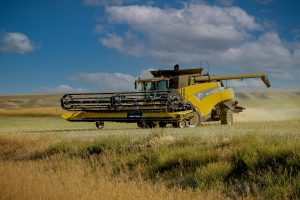4.10 Case Study: Job Analysis at Matrix Agricultural Systems
Case Study: Job Analysis at Matrix Agricultural Systems

Matrix Agricultural Systems (MAS) is a large producer of agricultural technology products. With 25 offices in Canada and a plan for an additional 5 more in the next two years, MAS is the leader in its field within the country. It manufactures innovative web-based technologies and sensors to help farmers improve their agricultural productivity. For example, it has developed sensors, that when placed strategically around fields along with image recognition technologies, it allows farmers to view their crops from anywhere in the world. The company’s most important strategic objective is to keep up with technological advances and find ways to drive the price of their product down.
In recent years, MAS has had difficulty recruiting engineers. The problem appears to have worsened because of an increase in the turnover rate. This rate is now higher than the market average for the agricultural business sector despite the highly competitive remuneration packages that MAS pays. The company has traditionally recruited engineers with a mechanical engineering background. Recently however, the shortage of engineers has become a more acute problem, especially in industrial areas where there is an abundance of technology companies and an increasing demand for engineers. Nathalie Lebrun, the Vice President of Human Resources is very worried that this situation may lead the company to lose its competitive edge. She has a pair of very specific mandates for Marcel Tremblay, her Talent Acquisition manager:
First, the criteria for entry-level engineer positions have to be looked at. They specify (a) an undergraduate degree in mechanical or industrial engineering and (b) at least three years’ experience. Nathalie wants Marcel to devise a method for evaluating the appropriateness and value of these as job specifications. Are these criteria really necessary to perform the job? Aren’t they unnecessarily restricting the labour pool from which MAS finds its employees?
Second, Nathalie wants Marcel to develop training modules for new technical employees to be included in “Matrix Agricultural Systems University”. Consequently, Marcel needs to determine what knowledge, skills, competencies and abilities are essential or critical for the job and integrate them into a training module.
Questions:
- When you read this article, what do you think they need to consider for job analysis. Make a list.
- What do you think the priority is for MAS? Explain why you believe this would be the priority.
- Research, and provide a list of reasons for high turnover. What strategy could MAS use to reduce turnover?
“Chapter 3: Analyzing and Designing Work” from Human Resources Management – 2nd Ontario Edition by Elizabeth Cameron is licensed under a Creative Commons Attribution-NonCommercial-ShareAlike 4.0 International License, except where otherwise noted.

